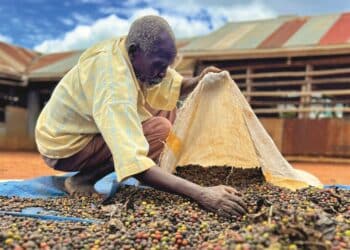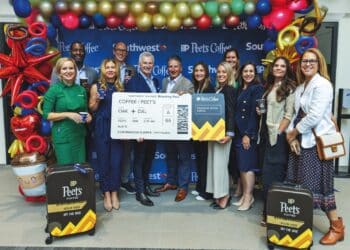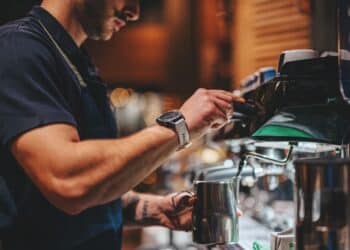Some of Latin America’s smaller coffee producers took centre stage at MICE2025 and are already preparing to return bigger and better for next year’s event.
Latin America is a powerhouse of global coffee production. It’s the international engine room formed on the bedrock of the Brazilian and Colombian coffee commodity titans. Five of the world’s top 10 coffee producers come from the region and, between them, produce more than half of the world’s coffee.
The harvests from Latin America often come to define the costs and profitability of the global scene. Spanning Central and South America – as well as some Caribbean nations – the cluster of countries there are almost all, in some parts at least, situated in the bean belt, from Mexico on the Tropic of Cancer down through to southern Brazil and Peru on the Tropic of Capricorn.
In a time when coffee production challenges continue to impact the sector, the continued growth of these nations shows smaller producers can reach a balancing act between commodity and specialty coffee and thrive in the face of challenging circumstances.
At this year’s Melbourne International Coffee Expo (MICE), the largest coffee-dedicated tradeshow in the Southern Hemisphere, delegations from El Salvadorian, Costa Rican, Ecuadorian, and Guatemalan embassies and businesses travelled to Melbourne on trade missions in the hope of engaging the international coffee community and furthering the growth of their products.
One such representative was Urku General Manager, Sebastian Pinto, who attended MICE2025 to progress the ambitions of Ecuador’s burgeoning coffee sector.
“Latin American coffee is like a symphony of flavours brewed in the heart of the new world,” says Pinto of Urku, an Ecuadorian coffee shop and chocolaterie in Melbourne’s inner south-east.
“What truly distinguishes it is the sheer diversity that comes from an incredible combination of microclimates, altitudes, and indigenous knowledge passed down generations.
“You’ve got the nuanced acidity of the high-altitude Guatemalan, the chocolatey body of a good Colombian, and then Ecuador is a kaleidoscope of profiles that makes Latin American coffee so fascinating.”
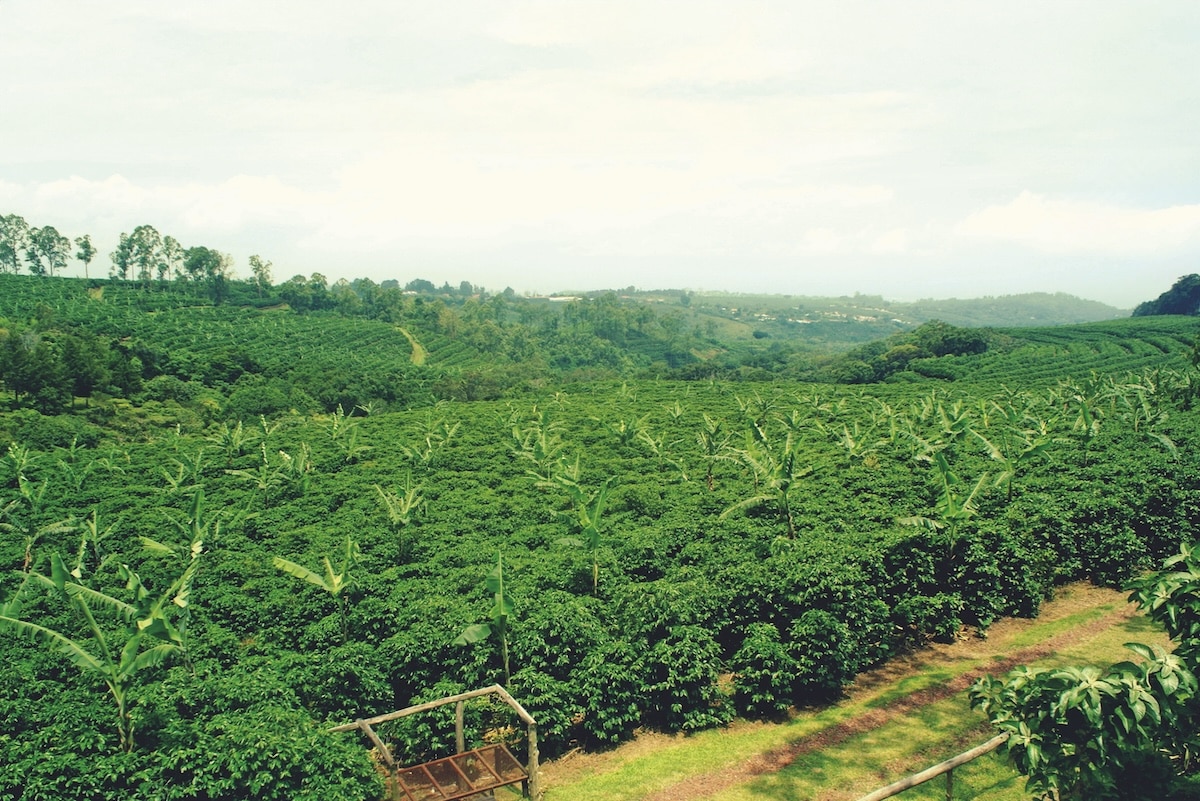
Pinto adds the aspects that make Latin American coffee so special are shown to the fullest potential in Ecuador’s rich soil.
“Ecuador often flies under the radar, but it’s a hidden gem thanks to its volcanic soils and dramatic altitudes, with coffee grown on small, family-owned farms nestled in the Andes,” he says.
“Because of the terrain, farmers are forced to innovate. Even a difference of 100 metres in elevation in Ecuador will see beans with a totally different profile, even if they’re from the same farm.
“You cannot have flat lands of monoculture crops. With the Andes cutting the country in half and the presence of the volcanic soil, you get an incredibly unique coffee aroma and profile.”
Across Latin America, like the rest of the world, some aspects of coffee farming remain steeped in tradition. But some of the smaller, bolder producers of the region are leading the way in creating a new generation of sustainable, economical, and equitable coffee farming.
Costa Rica is among those producing countries. Boasting one of the most naturally biodiverse environments in the world, it is at the forefront of new sustainability initiatives to protect its remaining natural beauty from the damages of deforestation.
“Costa Rica is one of the few coffee producing countries that’s aiming for net zero emissions by 2030 in its coffee production,” says Gonzalo Quesada, Deputy Head of Costa Rica’s MICE2025 delegation.
“One of the key policies around coffee farming in Costa Rica is that someone who wants to start a new coffee plantation is not allowed to engage in deforestation, so it must be at a place where a coffee or different type of plantation already existed.”
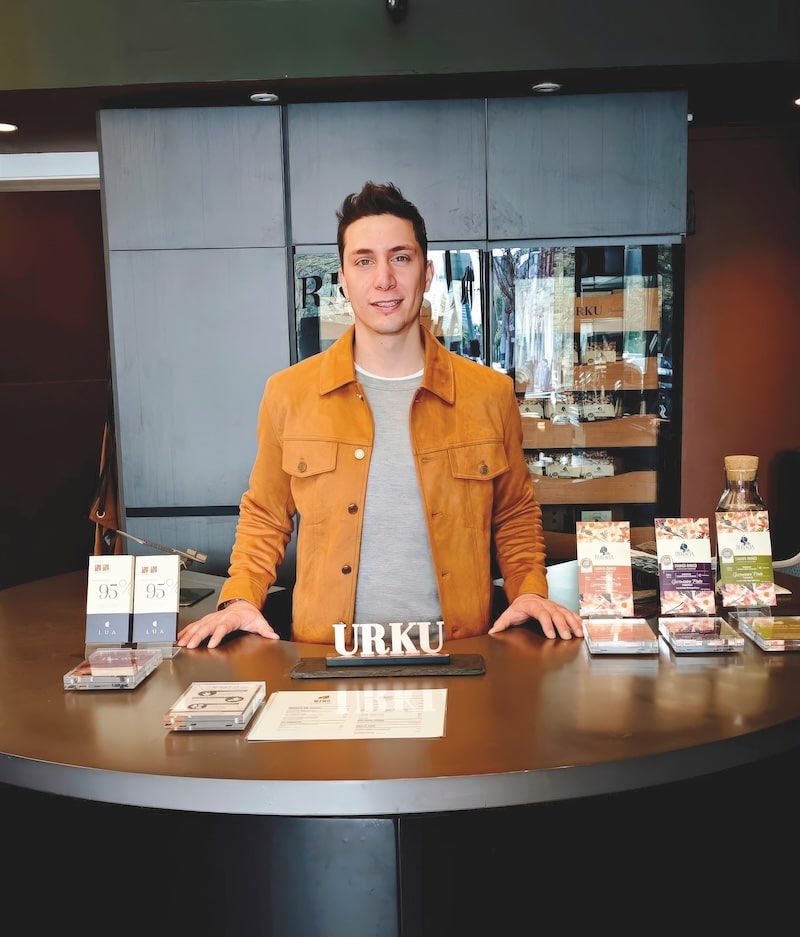
Costa Rica is also making the most of the strength of the industry to improve education and employment outcomes for the families of those embedded in it.
“Our governments, throughout history, have taken into account how important coffee has been for the development of Costa Rica as a nation, so they’ve tried to protect the producers and their families,” Quesada says.
“I believe one of the best things being done in Costa Rica now is continuing to focus on the people behind the product. We have social programs for coffee pickers and their families in the coffee plantations called Casas de Esperanza, which can be translated to ‘Houses of Hope’, where the children of the coffee pickers can attend school and don’t have to move around outside the plantation.”
Also in attendance at MICE2025 was the Latin American Business Council, and representation from El Salvador, who returned to MICE for the first time since 2015 to proudly display their Café de El Salvador coffee.
As a nation that has consistently earned praise for its tropical and vibrant Pacamara varietal, its government has refocused its support of the coffee production industry to growing its specialty coffee sector and away from commodity coffee.
Counsellor for the Embassy of El Salvador, Cristian Figueroa, says MICE2025 was the perfect landscape in which to both create and improve connections across the global coffee sector.
“In the past few years, we have been moving away from the commodity market and towards the specialty segment, and that change has been strongly supported by our government in El Salvador,” says Figueroa.
“Now we are trying to organise international coffee trade missions to build a real brand identity around Café El Salvador, which is the brand we are promoting.”
He adds it is important to continue to grow international awareness of El Salvador’s specialty coffee boom.
“MICE gave us a global stage to tell our story, meet potential partners and learn from some of the best operators in the business. It’s a convention where innovation meets tradition, it’s something that is familiar to everyone but there are a lot of new and exciting things in the industry.
“For small producers like El Salvador, it’s a place where we can shine and connect with the broader coffee community.”
Where business is done Since MICE2025 wrapped on March 22, interest in this year’s Latin American exhibitors has converted into genuine business opportunities for Costa Rican producers and brands, according to Quesada.
“The embassy was there to support the real experts who came from Costa Rica, and our stand created 86 leads for Costa Rican businesses,” he says.
“They took those leads back to Costa Rica. I was speaking with one of them recently and they told me they already have something concrete planned with a roaster here in Australia, so we’re already seeing the results of attending the event. Quesada says “MICE2025 was amazingly valuable” due to all people from the value chain of coffee production gathering in one place.
“You can find CEOs of companies, baristas, roasters, and importers – it was a great place to connect with all of them,” he says.
It’s thanks to Melbourne’s discerning coffee culture and audience that the Ecuadorian business experienced great audience engagement.
“The enthusiasm for farmer-owned enterprises was incredible to witness and people were genuinely interested in the farms, the farmers, and the soil. It was heartening to see our biodynamic efforts resonate so strongly,” Pinto says.
“People were eager to learn about our processes, why we embrace biodynamic practices, and the communities we represent.”
He adds there was extensive interest in both commodity and specialty coffee from attendees and fellow exhibitors.
“Even the exhibitors who mainly deal in commodity wanted to reach out and access Q-graded beans with scores of 88 and above,” he says.
Onwards and upwards Over the course of MICE2025, more than 31,000 attendees and 130 exhibitors from the international coffee community filed into the Melbourne Convention and Exhibition Centre (MCEC). With the bar set higher than ever before, event organisers are excited about the potential of MICE2026.
Next year’s dates are locked in for 26 to 28 March 2026 at the MCEC. Producer representation has long-been celebrated at MICE and will become a bigger focus at next year’s event. MICE Events Director Siobhan Rocks says the next phase in coffee education, and bridging the gap between consumer education of crop to cup, is bringing origin to Melbourne.
“We’re excited to announce the introduction of a new MICE feature called Trip to Origin. This designated area will celebrate the very first step in the coffee value chain, our coffee farms and farmers. We want to invite our visitors to explore origin without having to travel thousands of kilometres outside of Australia,” says Rocks.
“We envisage a space that transports attendees to origin, surrounded by coffee trees, hessian bags, and educational devices that help explain the detailed and intricate processes of coffee production.”

The new space will be an educational hub demonstrating different processing methods, varietals, and coffee innovation at ground level. It will provide a platform for green bean traders, dedicated country embassies, and coffee producers to make new business contacts and partnerships.
The space will also invite coffee lovers and consumers to better understand the coffee value chain through invitational speaking positions and seminars from Australian and international representatives.
“Education and consumer connection with farmers has long been a goal for many coffee roasters, and is as important as ever to celebrate,” Rocks says.
“Having a better understanding of the production process and ongoing challenges facing our aging population of farmers is crucial to the wider Australian community understanding the industry’s justification for higher coffee cup prices. It is this shared knowledge that can really help bridge that lack of connection, empower coffee drinkers to value the beans in their daily cup, and appreciate this incredible profession.”
Where business comes to play It’s already confirmed the Latin American Business Council and international delegations from the region will return to MICE in full force. Pinto says Ecuador is ready to once again to make its presence felt and believes eyes should be on what the nation’s coffee industry has in store over the remainder of 2025, and beyond.
“We’ll be back with even more confidence and ready to share the fruits of our labour. We’ve got some exciting new projects brewing and we’re expecting some amazing discoveries,” he says.
“MICE is more than just a tradeshow, it’s a dynamic hub for innovation, collaboration, and knowledge sharing. It’s a place where you can discover cutting-edge concepts, connect with like-minded individuals, and explore the best expressions of coffee around the globe.”
Figueroa adds that plans are already in place for El Salvador to present its specialty sector in a more powerful and vocal way.
“We want to more strongly present the role El Salvador can play in terms of providing quality coffee to the world through our Café El Salvador product. Pacamara is our pride and joy. It was created in the 1950s by Salvadoran geneticists and it has become one of the most awarded coffees in the world,” he says.
“We can see everybody tries to bring something new and different to the experience, and we don’t want to fall behind. We are already planning the best way to present our Pacamara coffee and tell the unique stories El Salvador has to offer the international coffee industry.”
Figueroa says there is so much innovation around coffee in Australia, and Melbourne specifically, adding MICE provides an incredible platform to bring the industry together in a place where everyone is so passionate about coffee.
“It is where serious conversations happen, and it’s where producers, roasters, tech innovators, and traders all come together,” he says.
“It drives trends and shapes the future, and gives countries like El Salvador a seat at the table.”
This article was first published in the July/August 2025 edition of Global Coffee Report. Read more HERE.
MICE2026 will take place at the at the Melbourne Convention and Exhibition Centre from 26 to 28 March 2026. For exhibitor inquiries, please contact Mike Wilson at mike.wilson@primecreative.com.au or visit internationalcoffeeexpo.com


